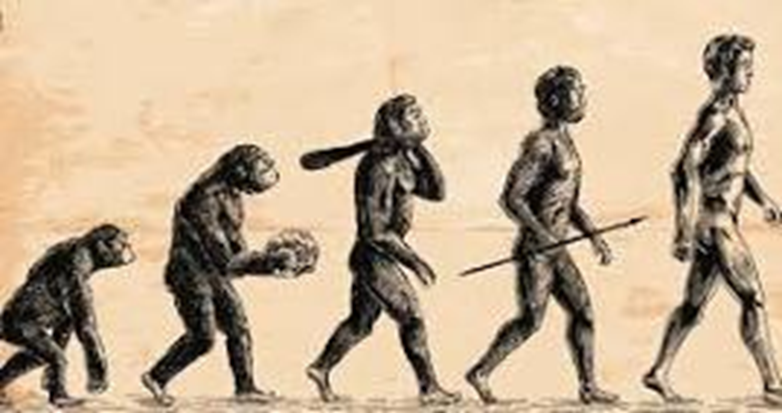What is evolutionary biology

Evolutionary biology is a branch of biology that studies the evolutionary processes that produced biodiversity on Earth, starting with the last universal ancestor. These processes include natural selection, common ancestry, and speciation.
This discipline emerged out of what Julian Huxley called the modern evolutionary synthesis (from the 1930s) from the understanding of many previously unrelated areas of biological research, such as genetics, ecology, systematics and paleontology.
Current research has expanded to cover the genetic architecture of adaptation, molecular evolution, and the various forces that contribute to evolution including sexual selection, genetic drift, and biogeography. The new field of evolutionary developmental biology investigates how embryogenesis can be controlled, thus creating a broader synthesis that integrates developmental biology with the areas covered by previous biological synthesis.

Minor branches of evolutionary biology
Evolution is the central unifying concept in biology. Biology can be divided in different ways. One such approach is at the level of the biological hierarchy from molecular organisms (molecular biology) to cellular organisms (cell biology) to highly complex organisms. The oldest method is based on taxonomic grouping (taxonomy) in fields such as zoology, botany and microbiology, reflecting what were considered to be the basic classifications of life. The third way is through method, such as field biology, mathematical biology, experimental evolution, and paleontology. These alternative ways of dividing the subject can be combined with evolutionary biology to create sub-branches such as evolutionary ecology and evolutionary developmental biology.
Recently, the combination of biological sciences and applied sciences has led to the emergence of new branches as extensions of it, such as evolutionary robotics, evolutionary engineering, evolutionary algorithm, evolutionary economics, and evolutionary architecture. The main mechanisms of evolution are applied directly or indirectly to produce innovative designs or to solve problems that would be difficult to solve in other ways. Therefore, the resulting research in these applied branches contributes to progress, especially thanks to efforts in development in computer science and engineering fields such as mechanical engineering.

History of evolutionary biology
Charles Darwin proposed the idea of evolution by natural selection in 1859, but evolutionary biology (as an independent academic discipline) emerged during the modern evolutionary synthesis of the 1930s and 1940s. Universities did not begin to dedicate a department to it until the 1980s. In the United States, many universities have established new departments such as molecular and cell biology and evolutionary environmental biology, replacing older departments such as botany and zoology. Paleobiology is often combined with earth sciences.
Microbiology has also become an evolutionary discipline now that we better understand microbial physiology and genomics. The generation ages of bacteria and viruses such as phages have enabled us to examine and explore evolutionary questions.
Many biologists contributed to the formation of the new specialty. Theodosius Dobzhansky and Edmund Henry Ford established an experimental research program, while Ronald Fisher, Sewall Wright, and John Scott Holden established a sound theoretical framework. Ernst Mayr in systematics, George Gaylord Simpson in paleontology, and George Lydiard Stoddard in botany helped shape modern synthesis, and James Franklin Crowe, Richard Lewontin, Dan Hartle, Marcus Feldman, and Brian Charlesworth trained a generation of evolutionary biologists.
Current research topics
Current research in evolutionary biology covers multiple topics and incorporates ideas from fields as diverse as molecular genetics and computer science.

Initially, some areas of evolutionary research attempted to explain poorly understood phenomena in the modern evolutionary synthesis. This included speciation, the evolution of sexual reproduction, the evolution of cooperation, the evolution of senescence, and phylogeny.
Second, biologists asked the most direct evolutionary question: “What happened and when did it happen?” This included fields such as paleontology, systematics, and phylogenetics.
Third, the modern evolutionary synthesis was invented at a time when no one understood the molecular basis of genes. Today, evolutionary biologists try to determine the genetic architecture of exciting evolutionary phenomena such as adaptation and speciation, searching for answers to questions such as how many genes are involved, how much influence each gene has, how much overlap there is between different genes, what genes do, and what changes occur. them (such as point mutation versus gene duplication) or even polyploidy. Scientists are trying to reconcile the high heritability found in twin studies with the difficulty of finding which genes are responsible for this heritability using genome-wide regulatory studies.
One challenge in studying genetic architecture is that the population genetics that motivated the modern evolutionary synthesis must be constantly updated to take modern molecular knowledge into account. It requires a great deal of mathematical sophistication to link DNA sequence data to evolutionary theory as part of the theory of molecular evolution. For example, biologists try to work out what genes are under direct selection by performing selective scanning.
Fourth, the modern evolutionary synthesis involves agreement about the forces that contribute to evolution, but not their relative importance. Current research attempts to determine this. Evolutionary forces include natural selection, sexual selection, genetic drift, associativity, evolutionary constraint, mutation bias, and biogeography.

Scientific journals
Some scientific journals specialize exclusively in evolutionary biology, such as Evolution and Developmental Biology and BMC Evolutionary Biology. Some journals cover sub-disciplines within this science, such as Systematic Biology, Molecular Biology and Evolution, and its sister journal Genome Biology and Evolution.
Source: websites

